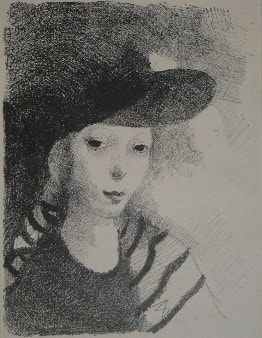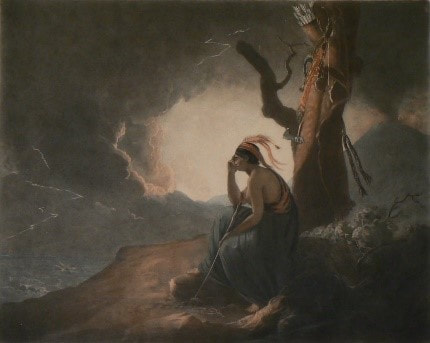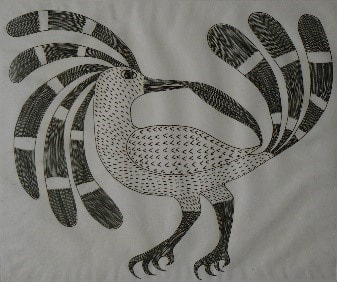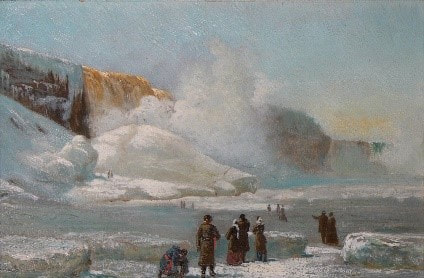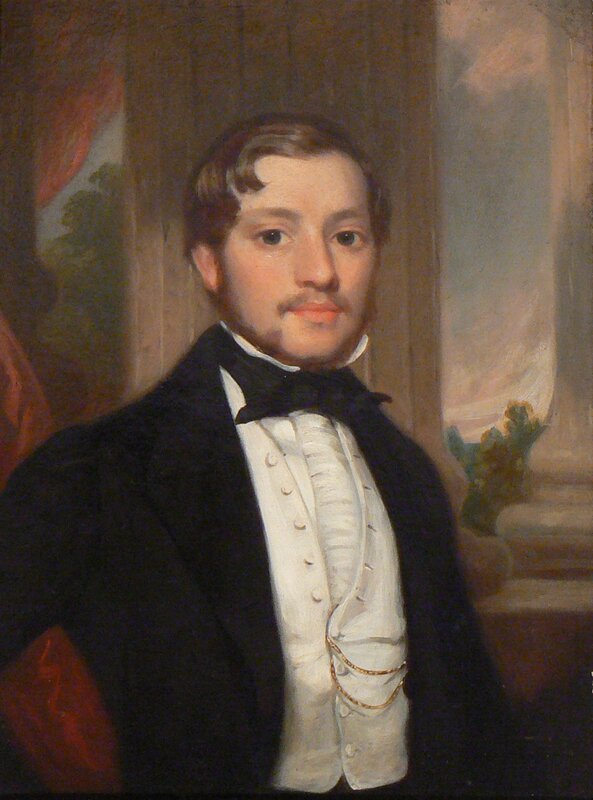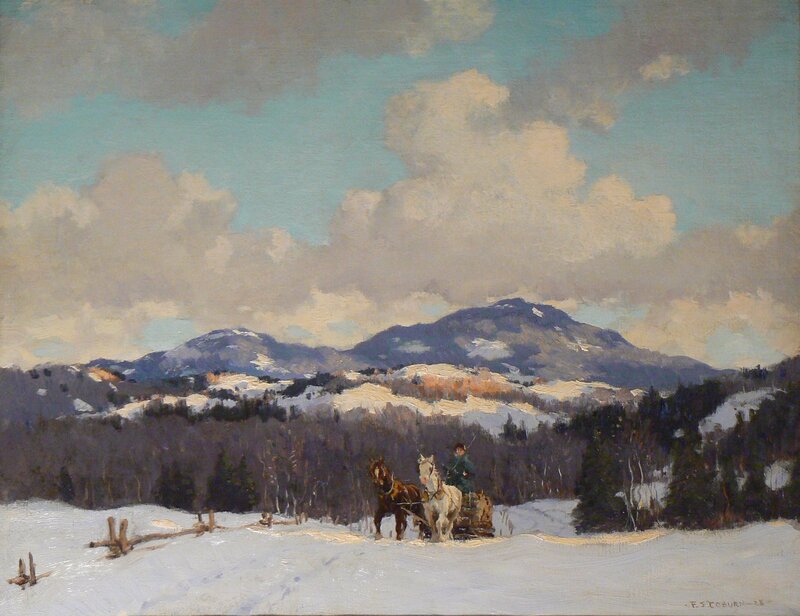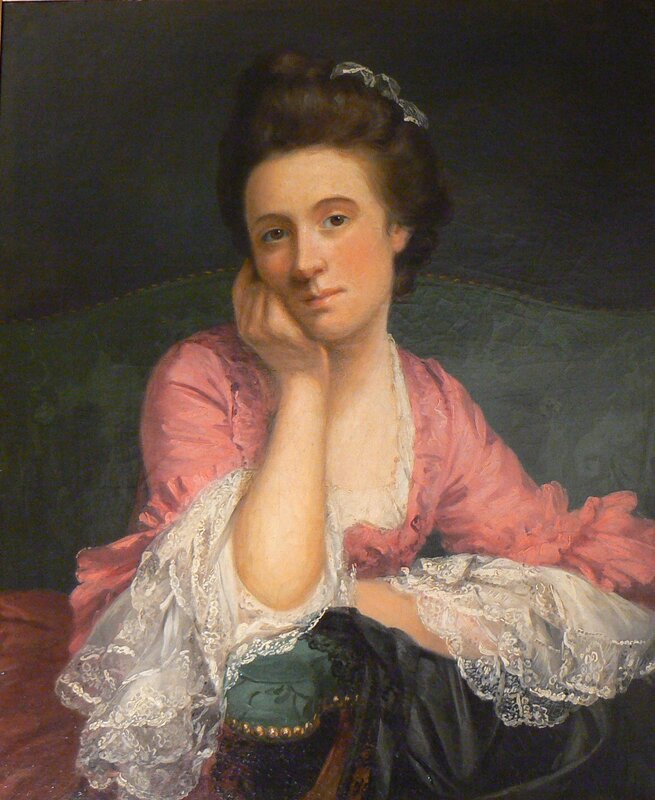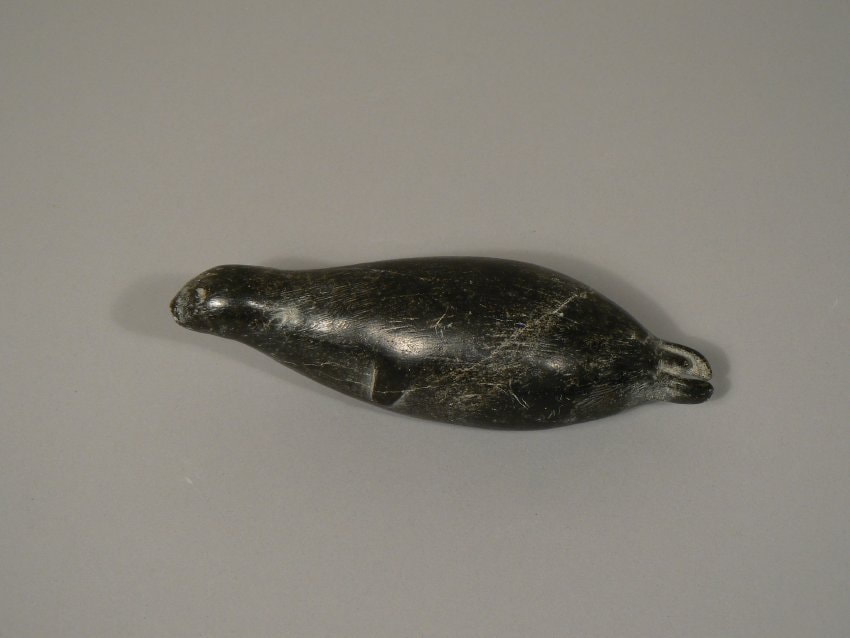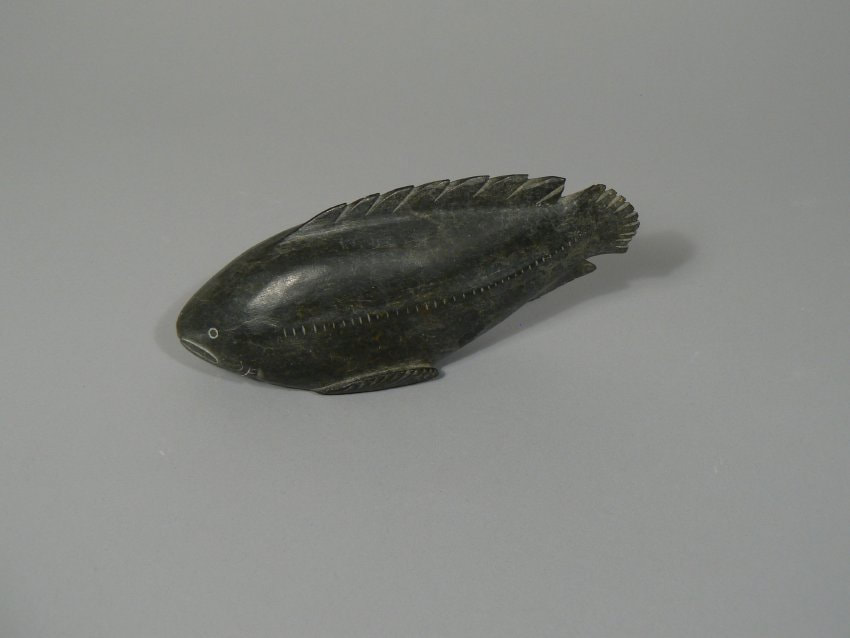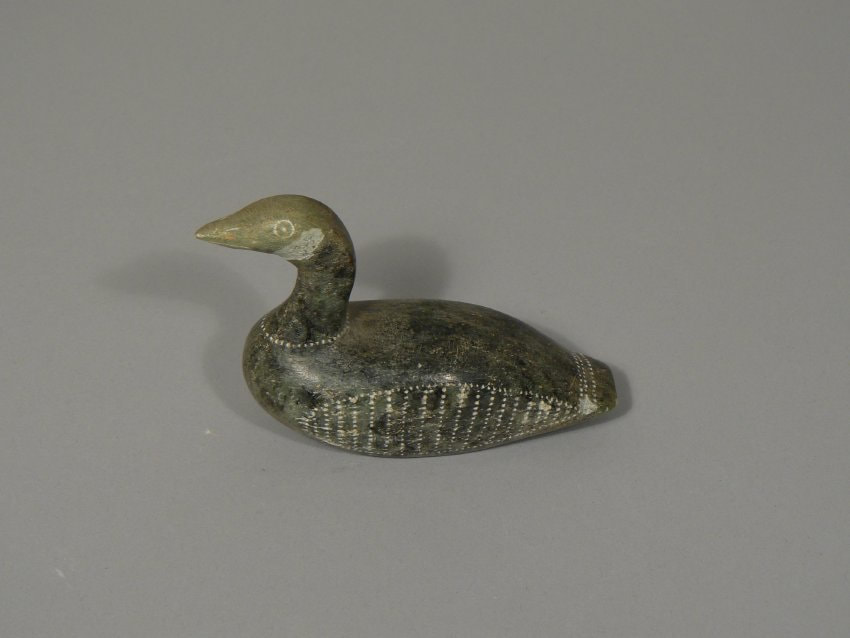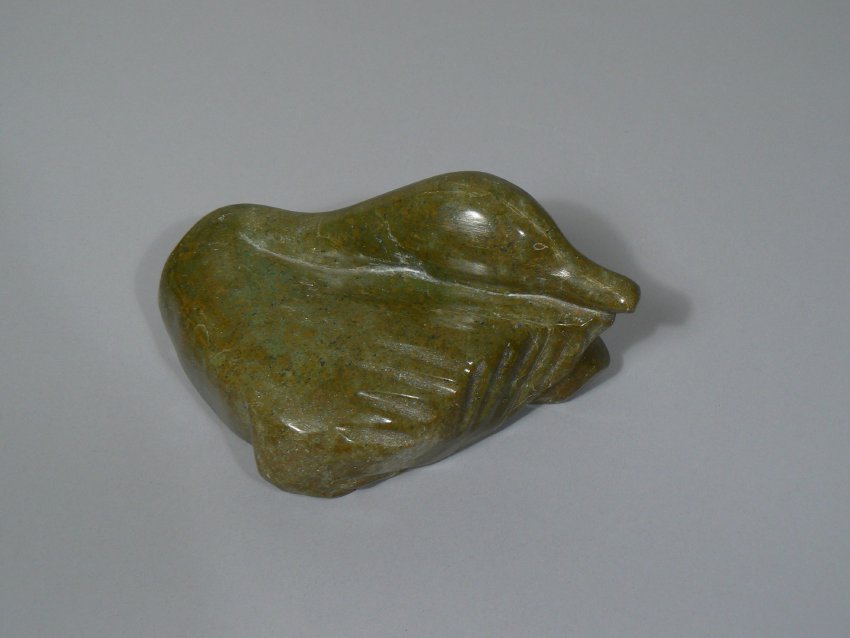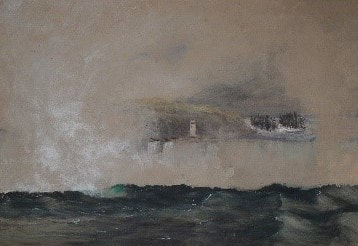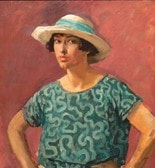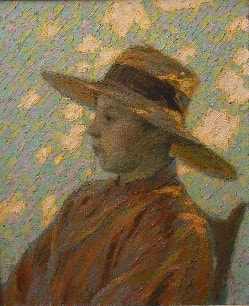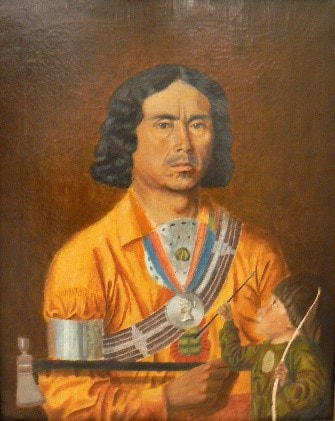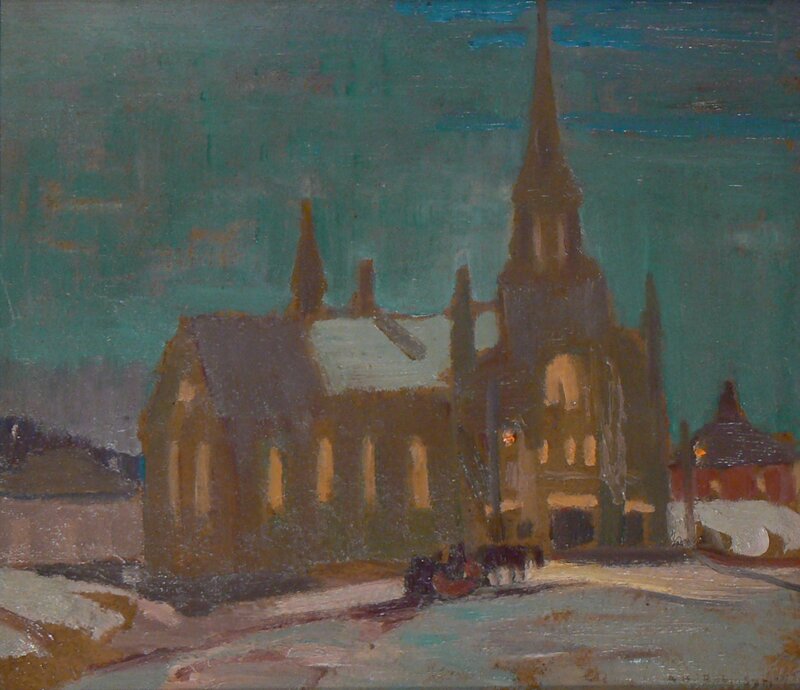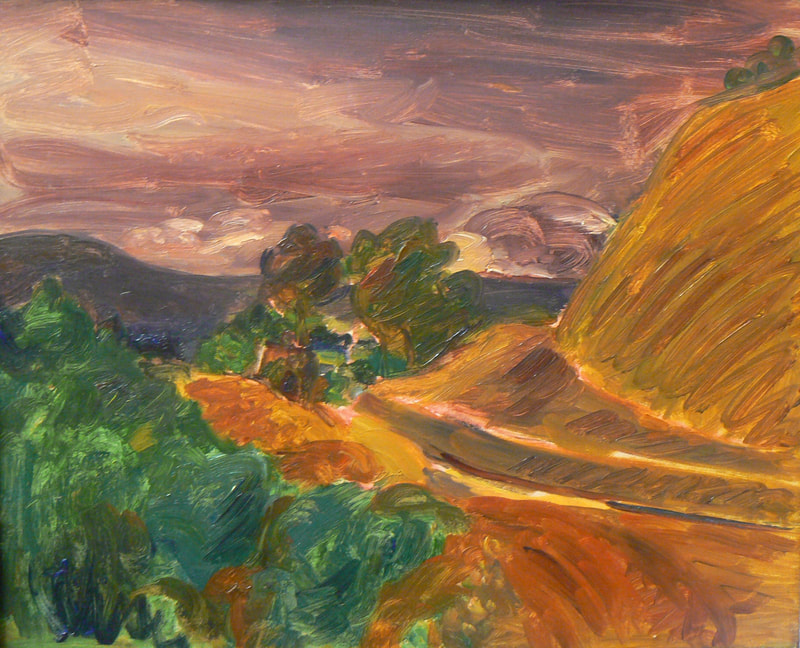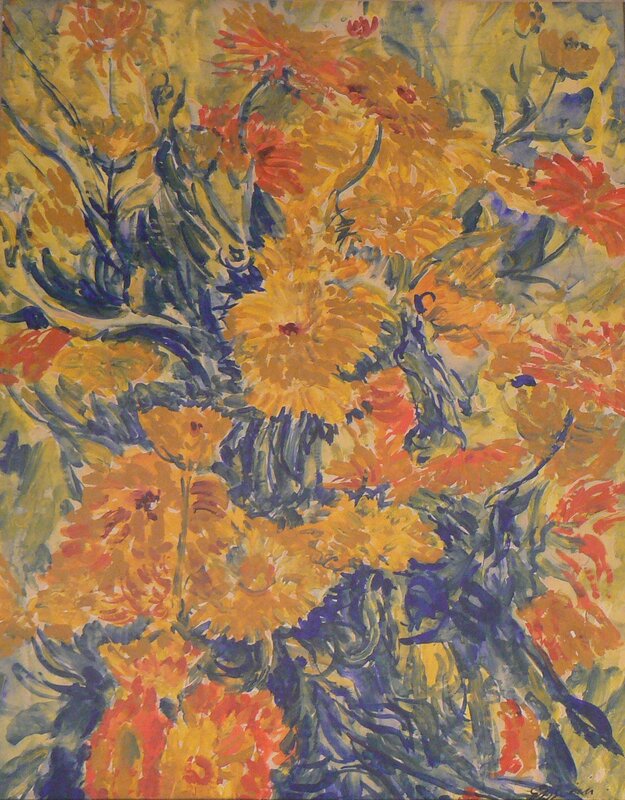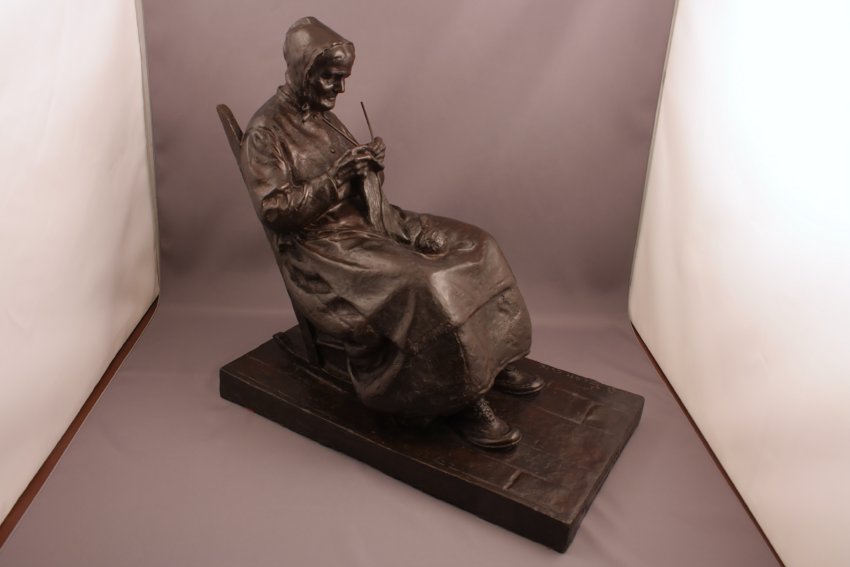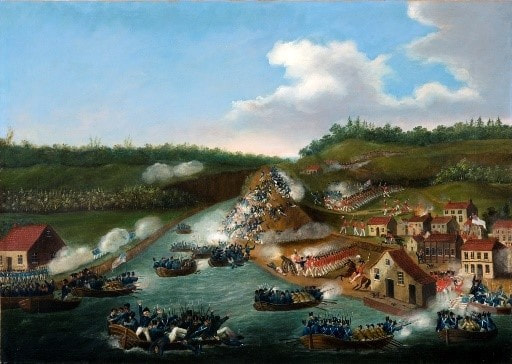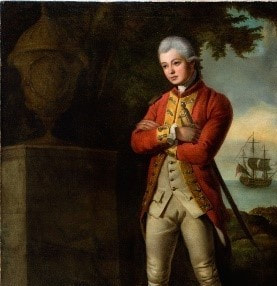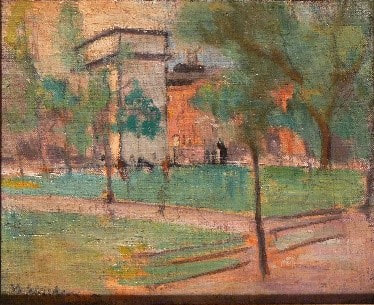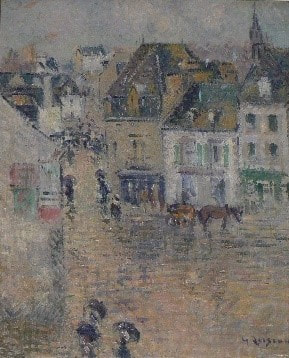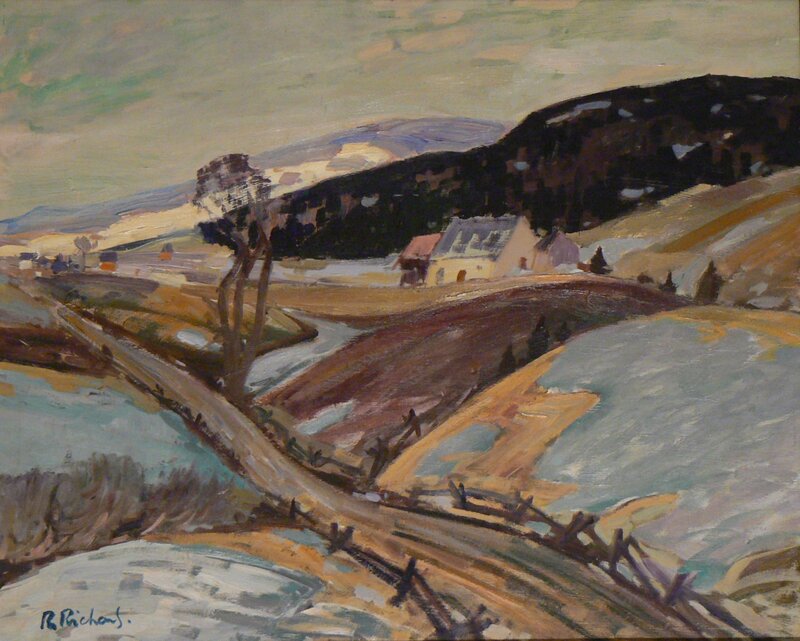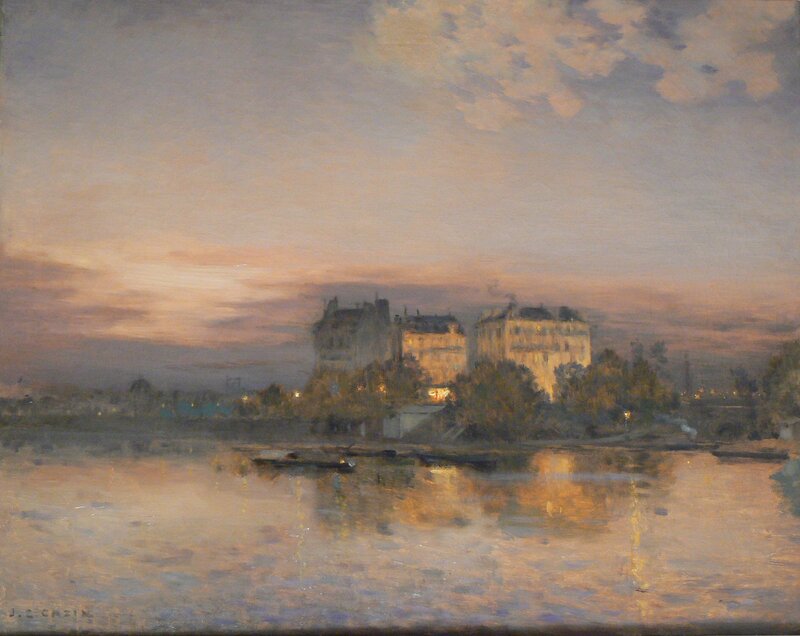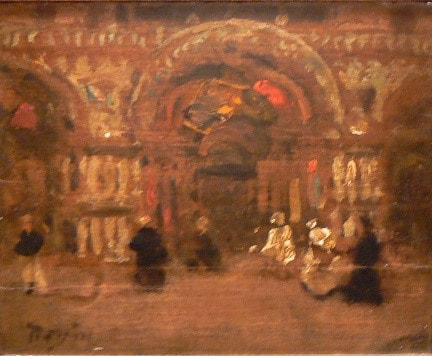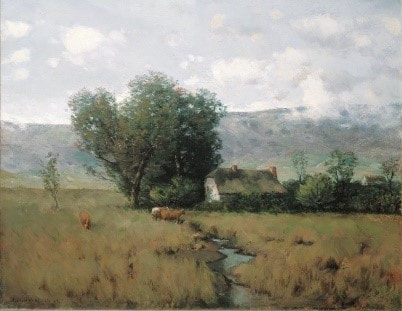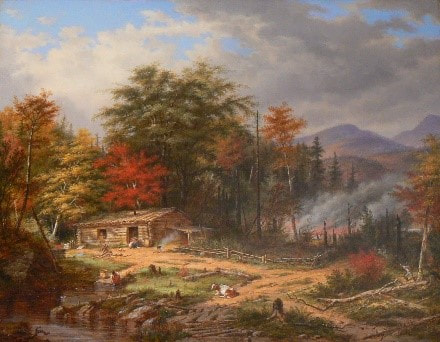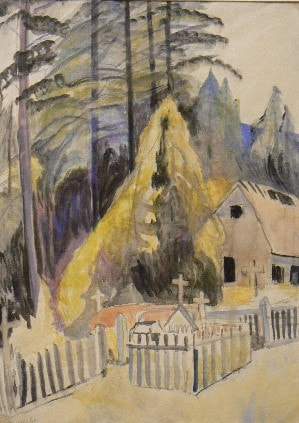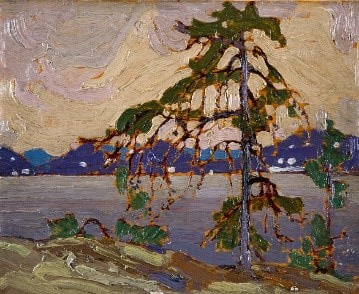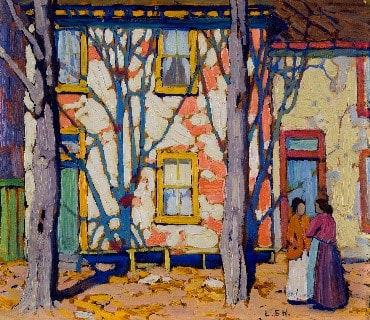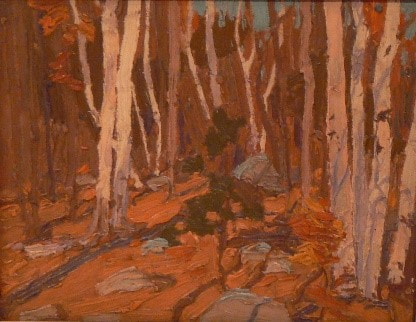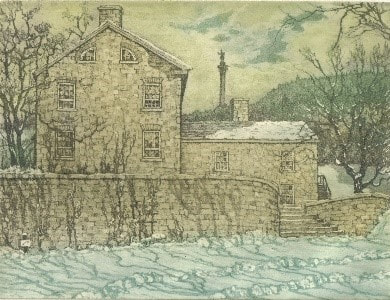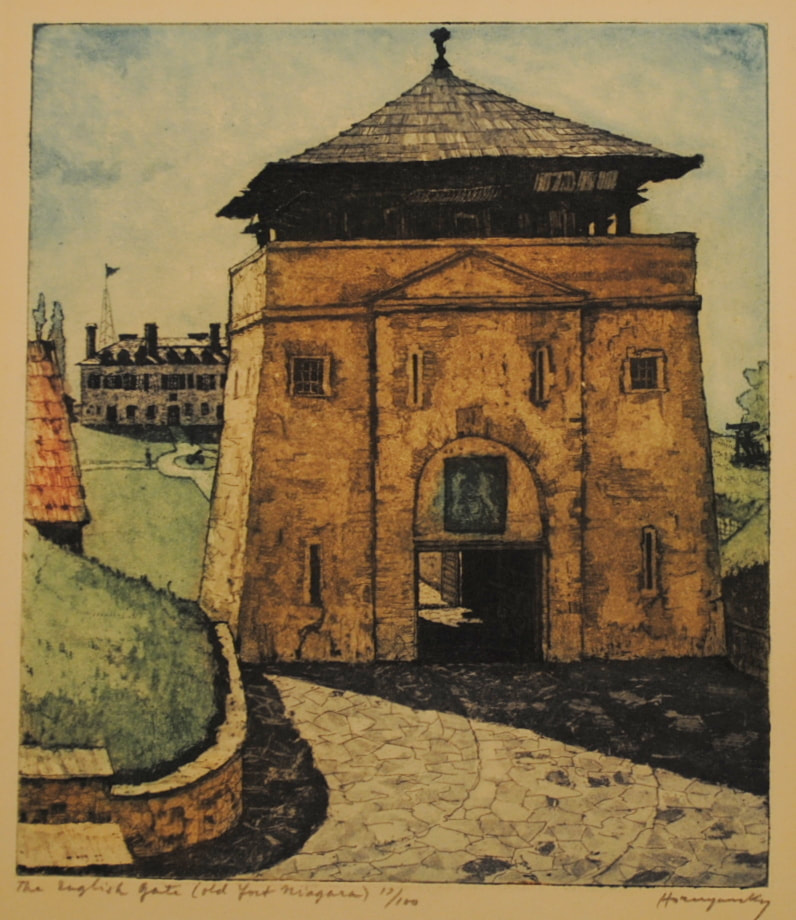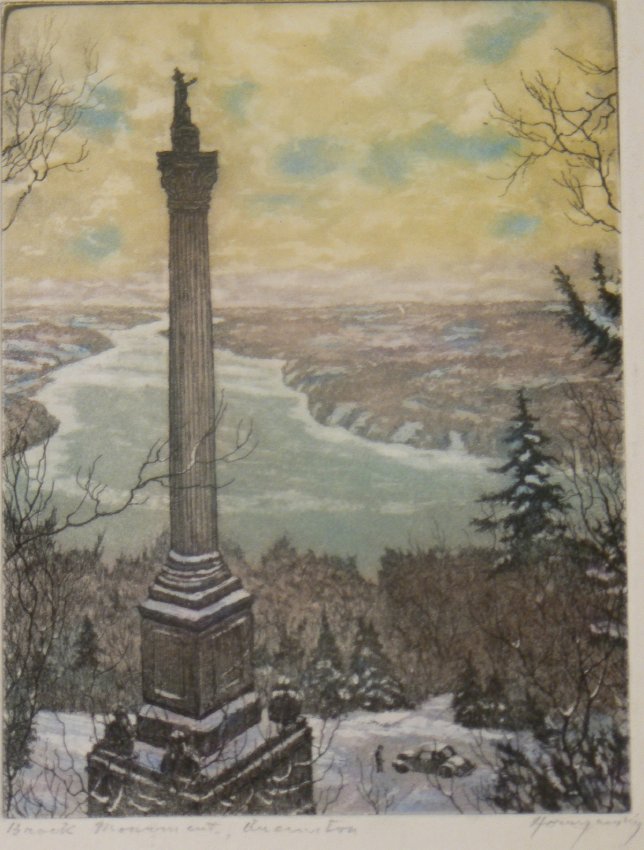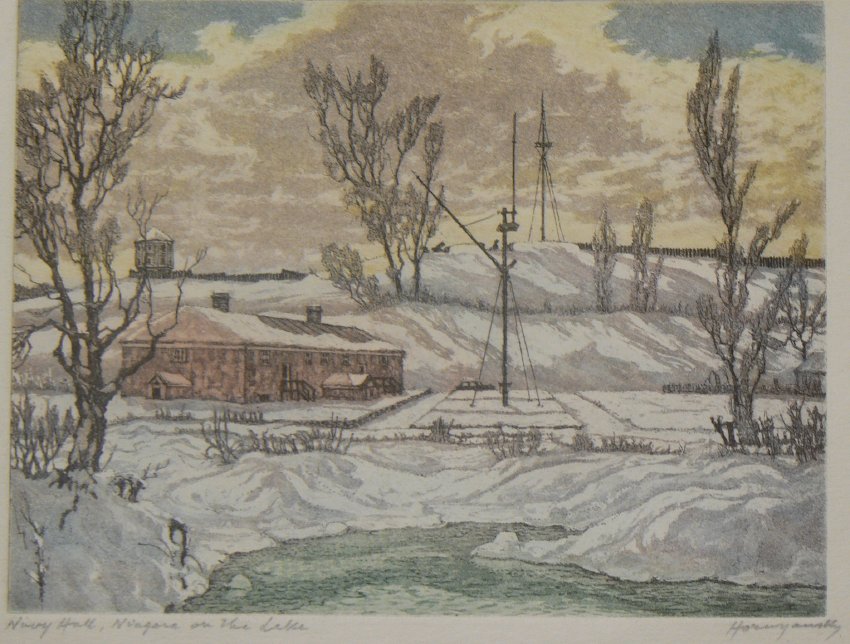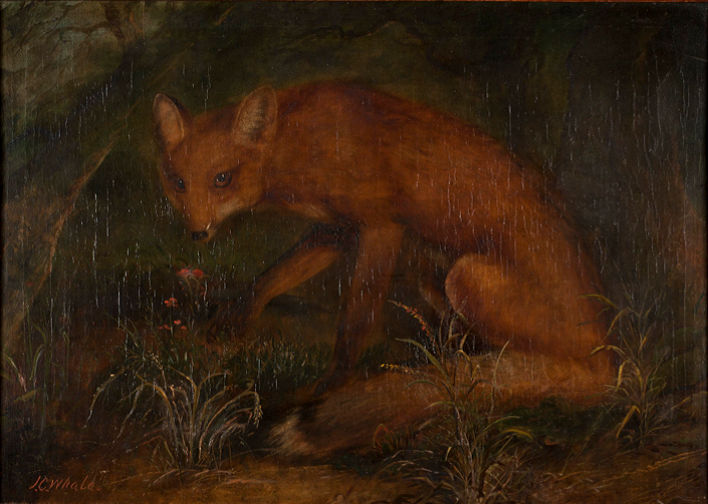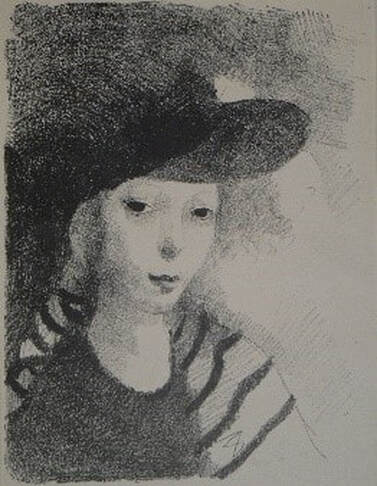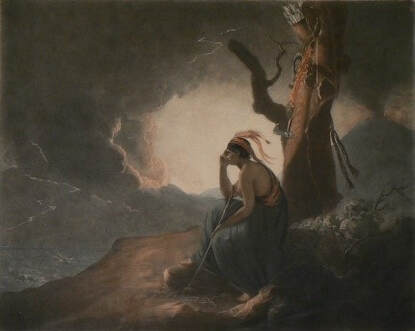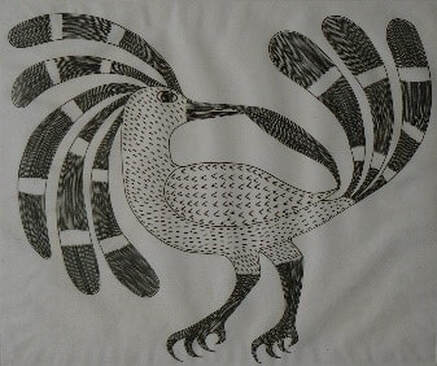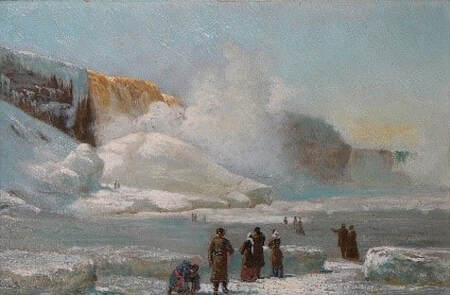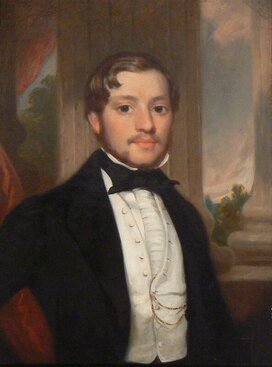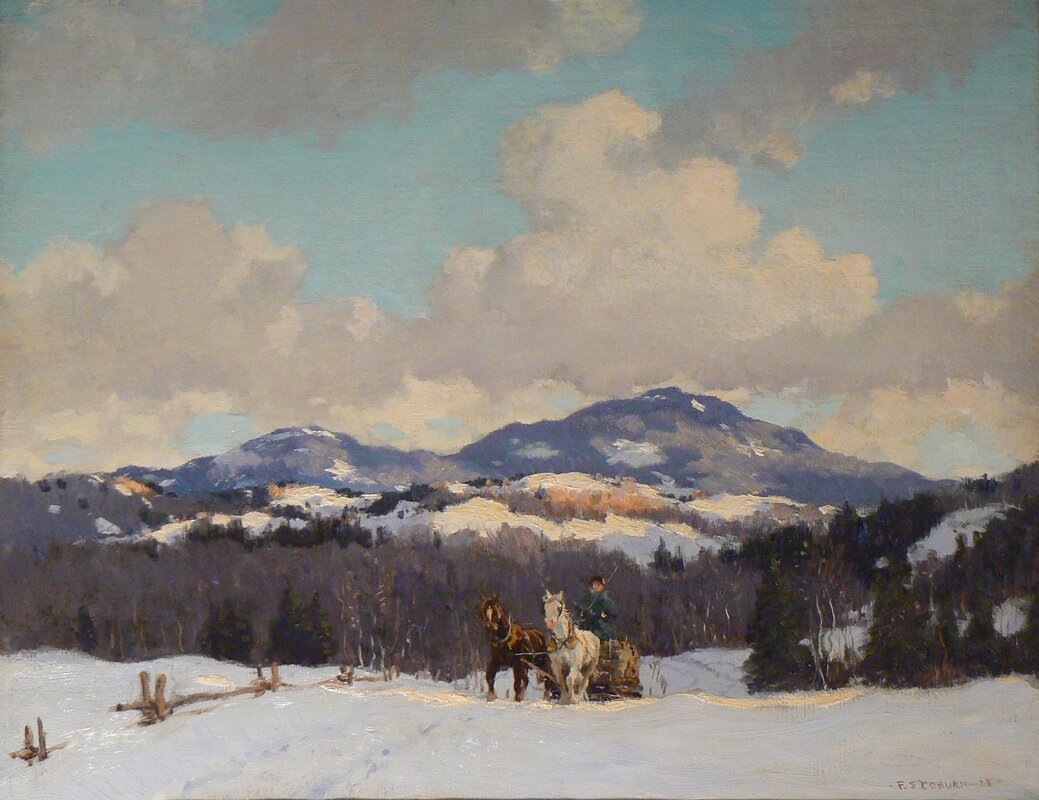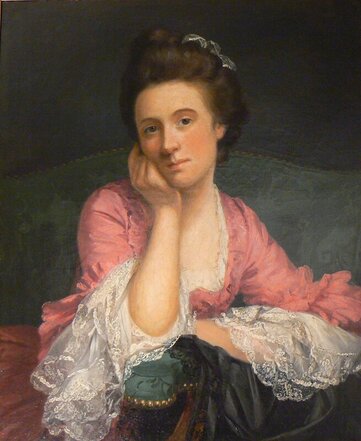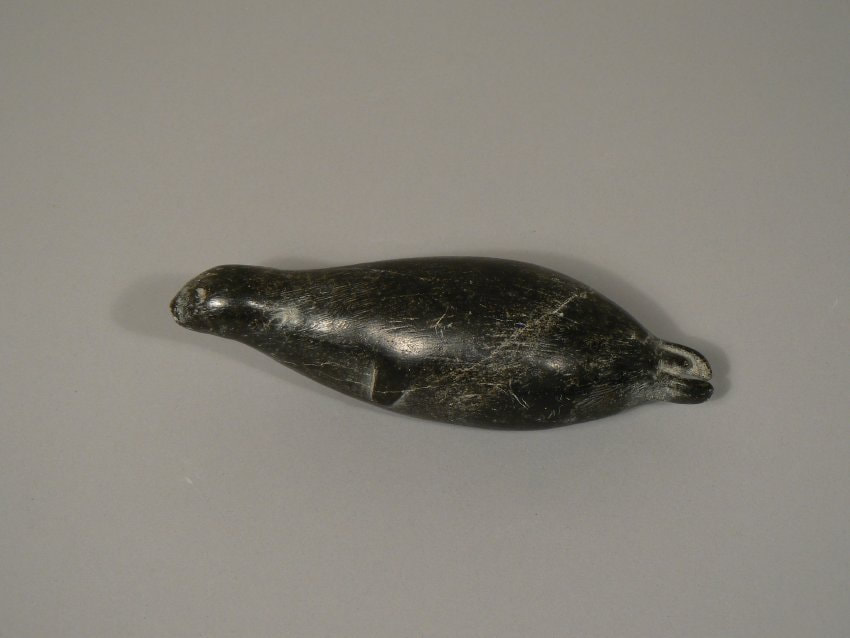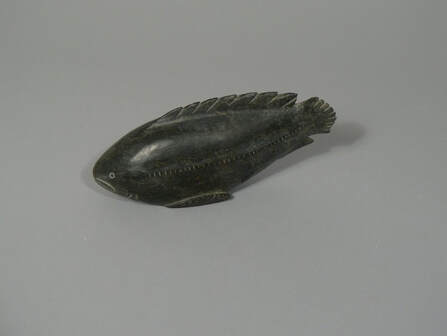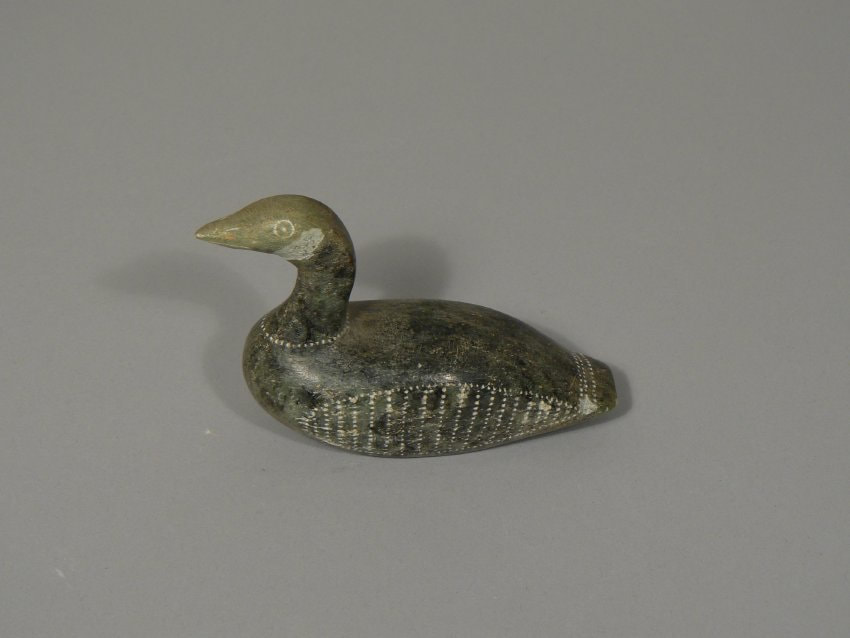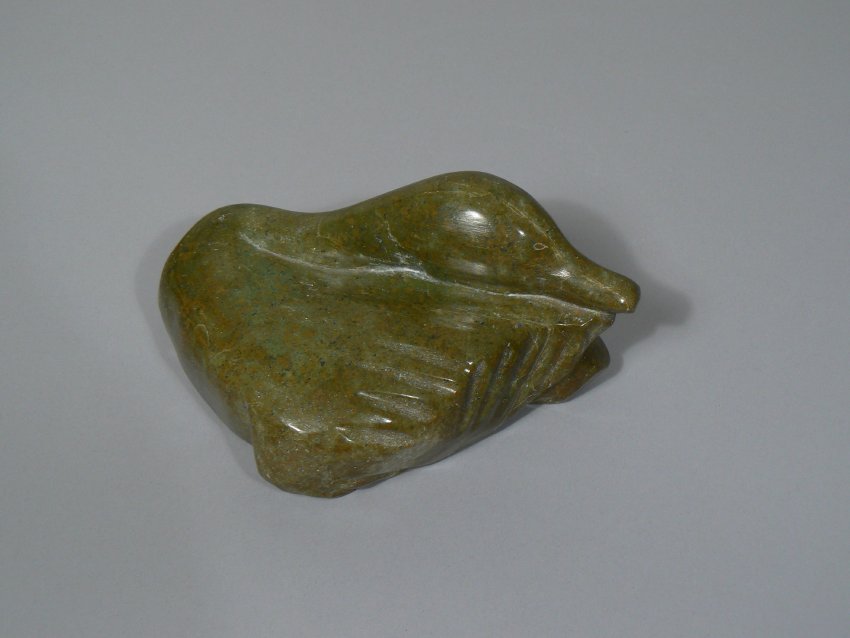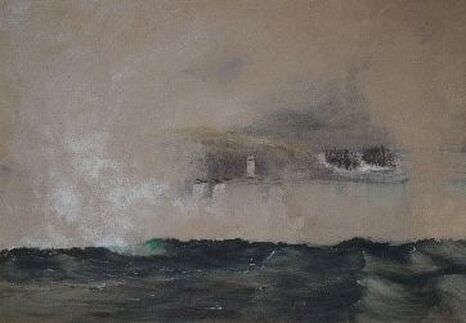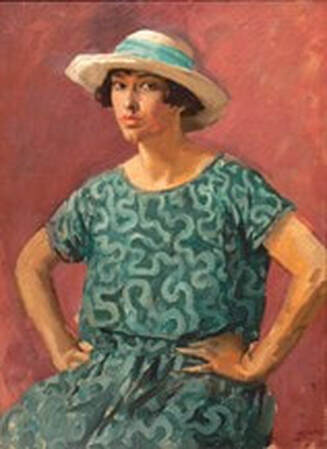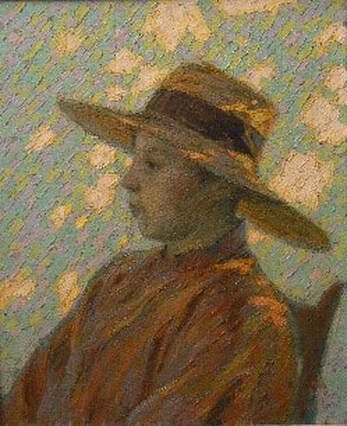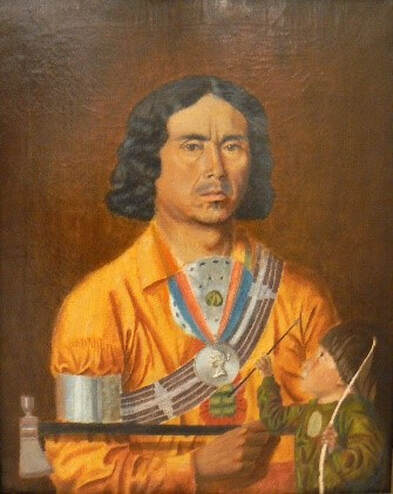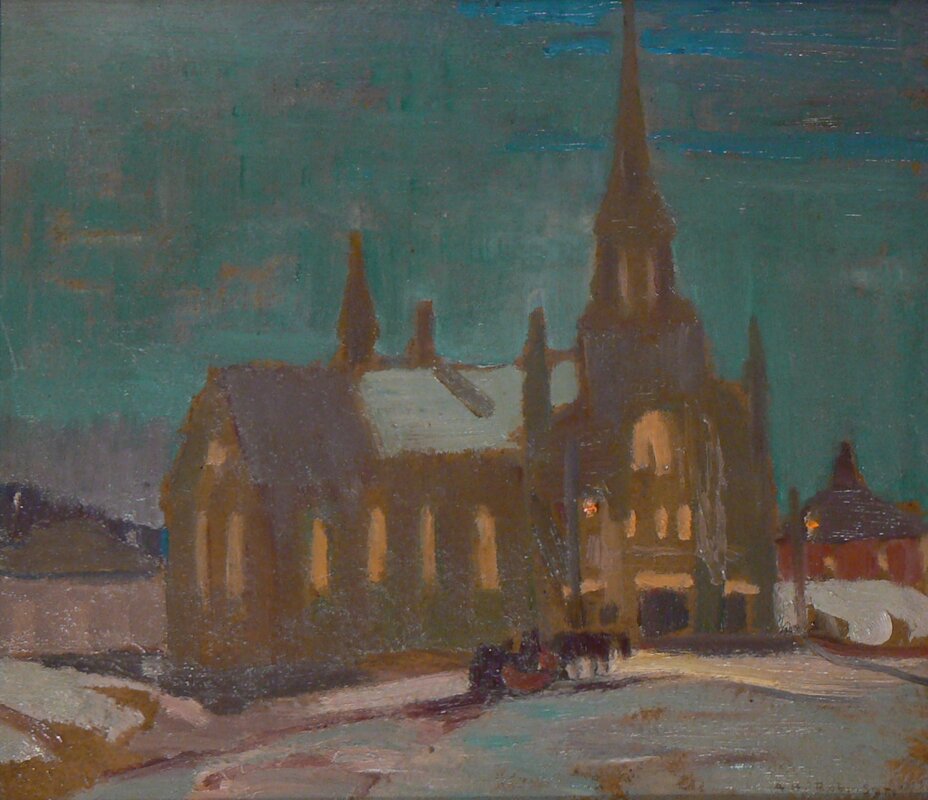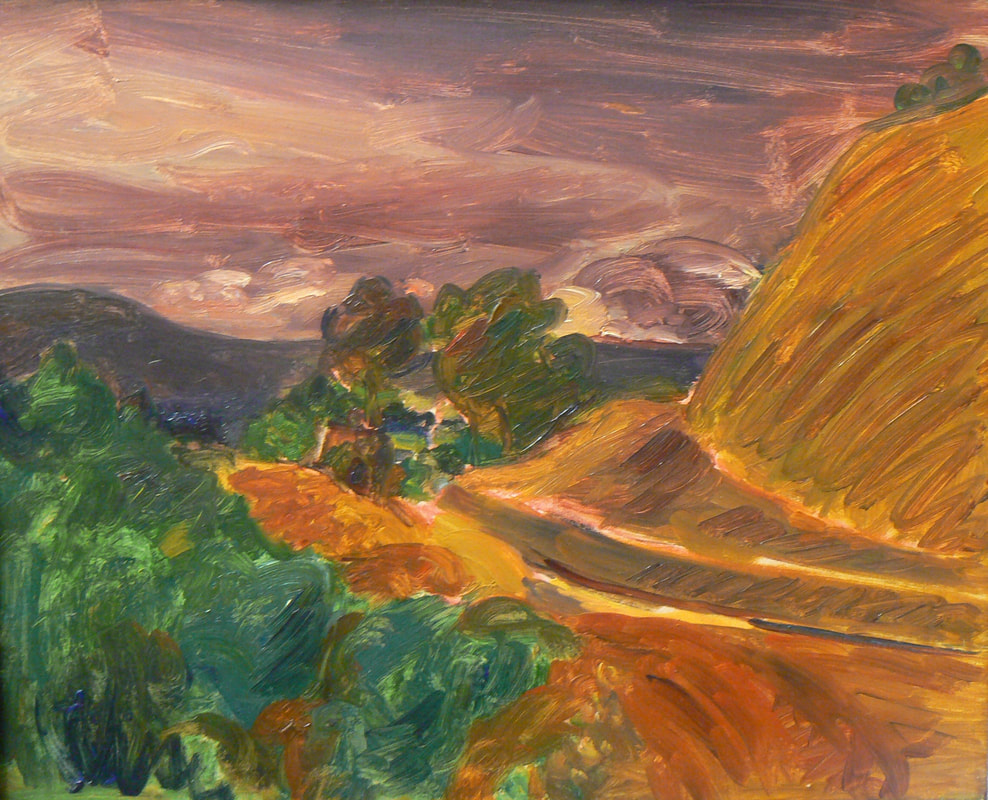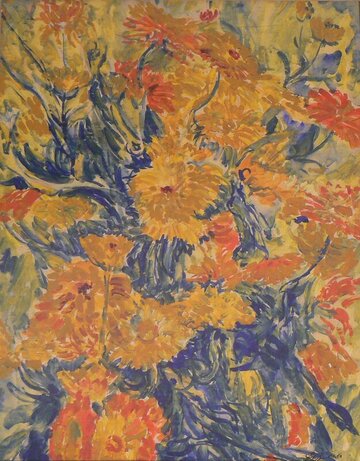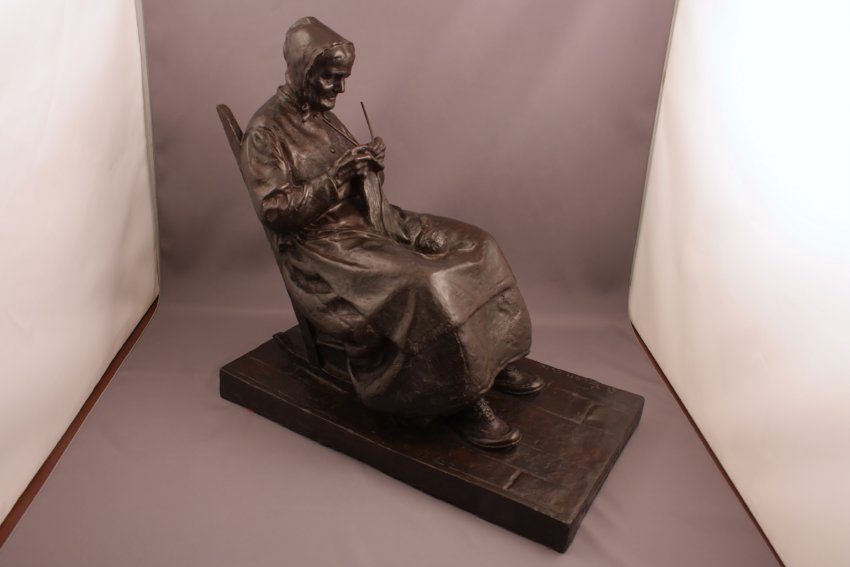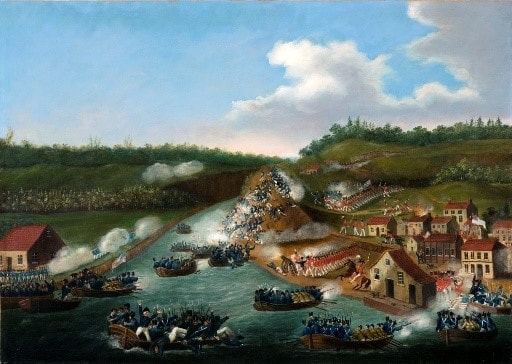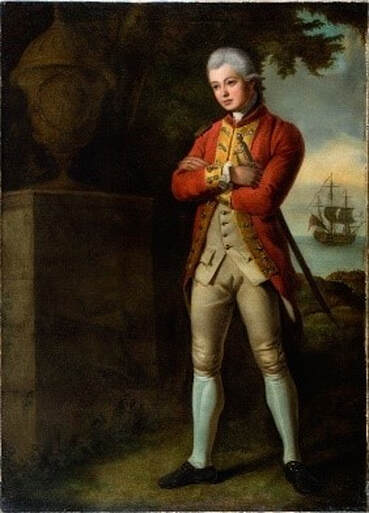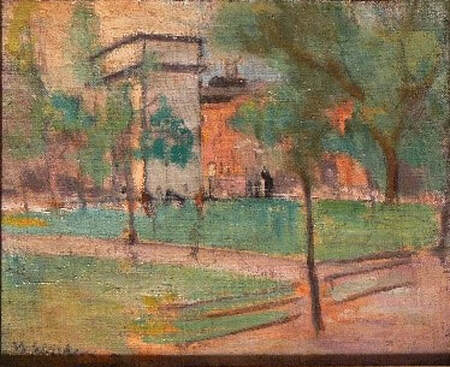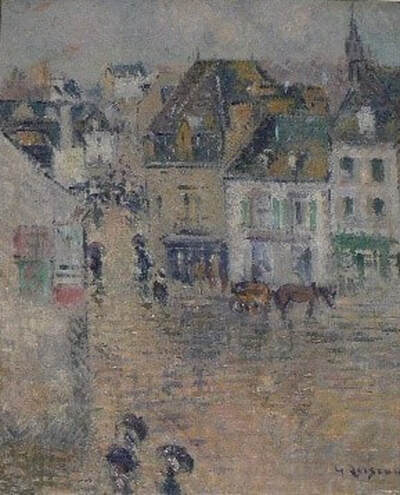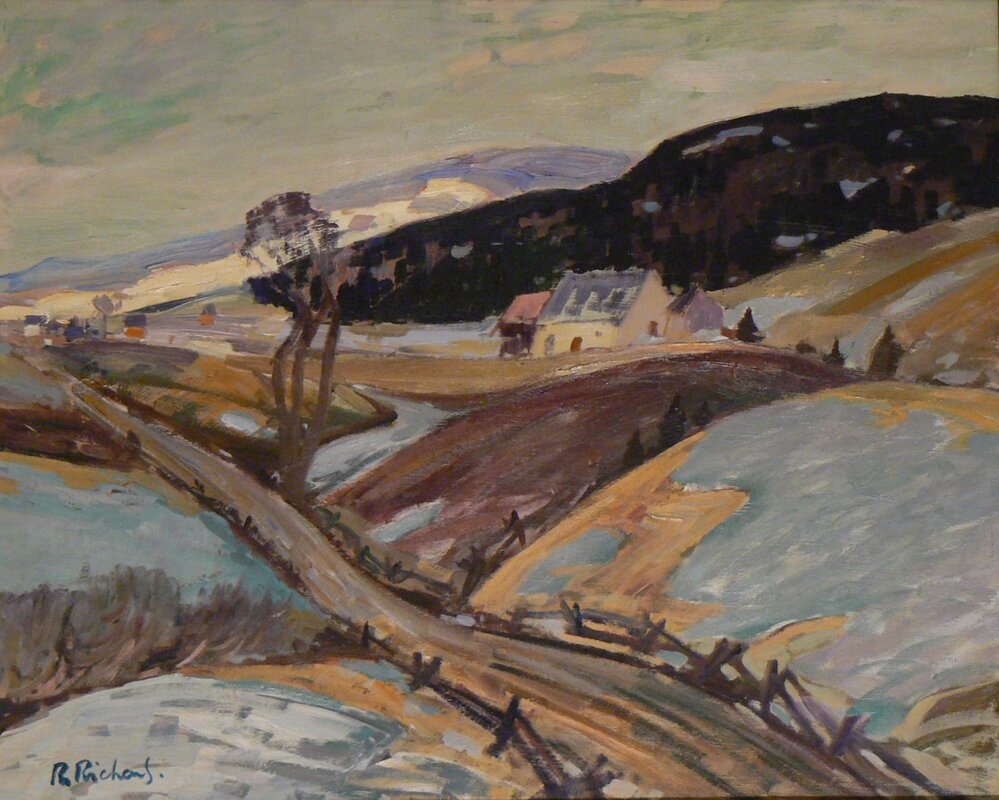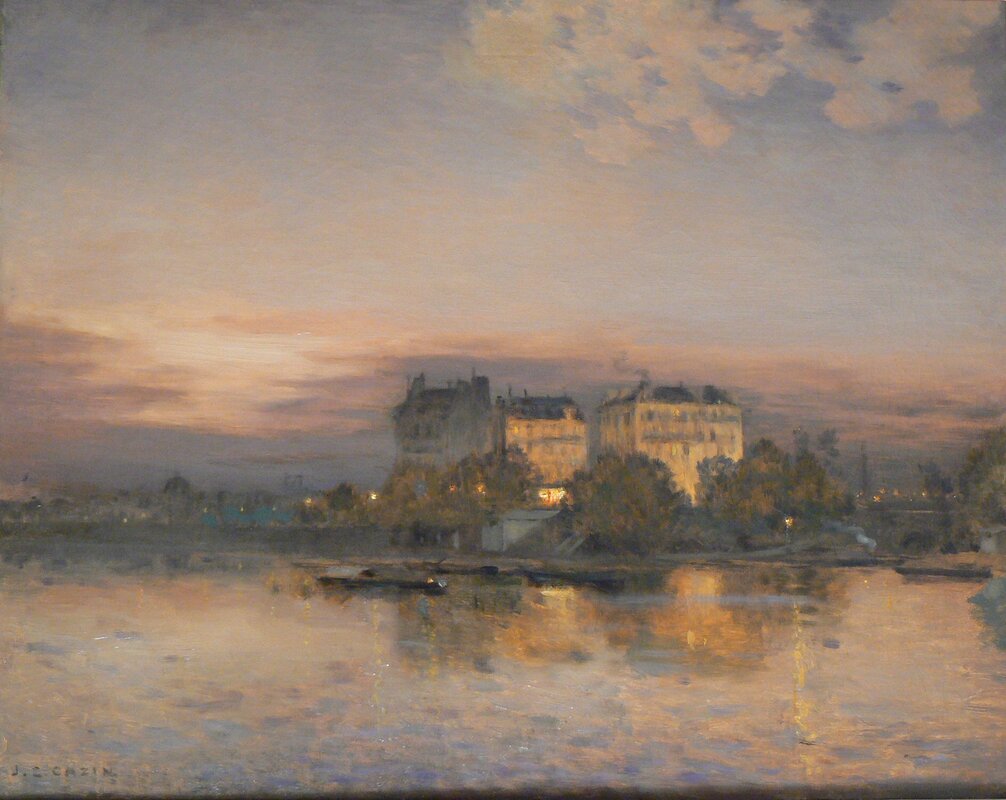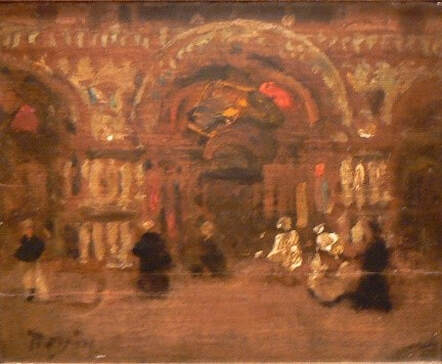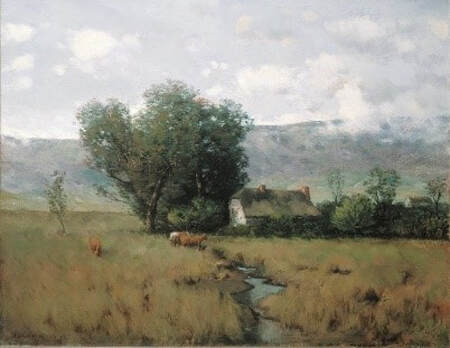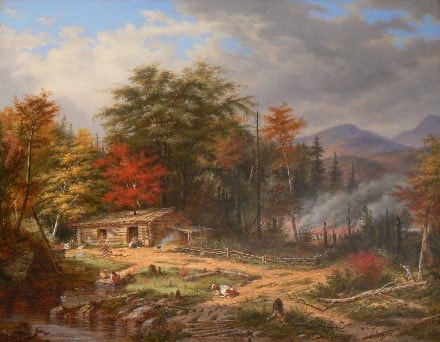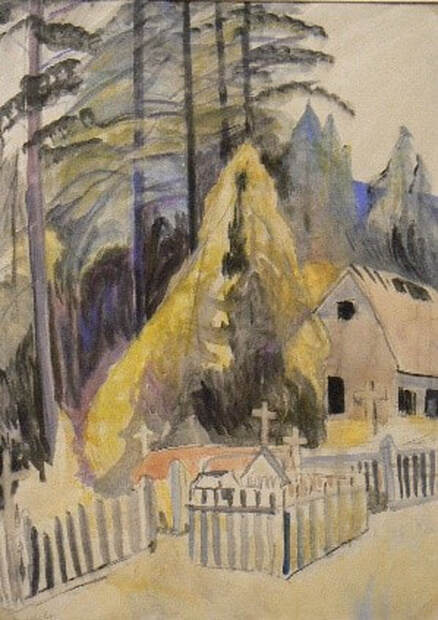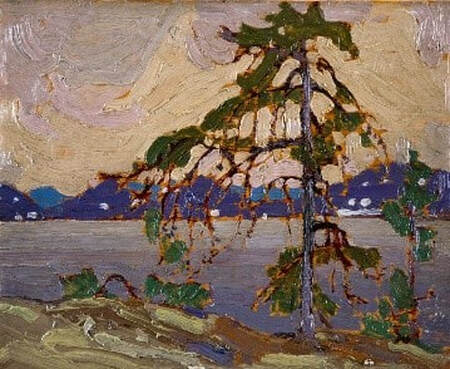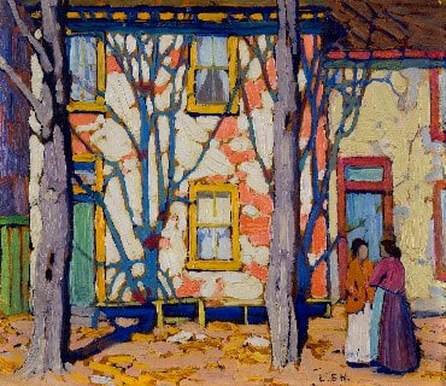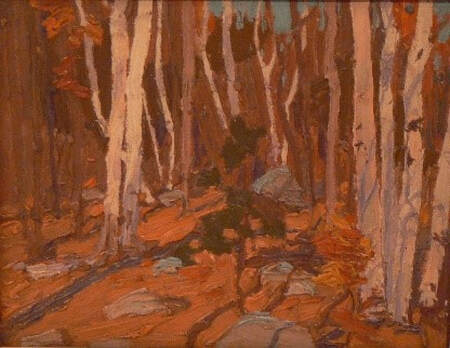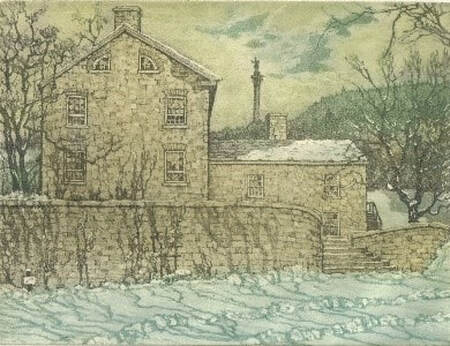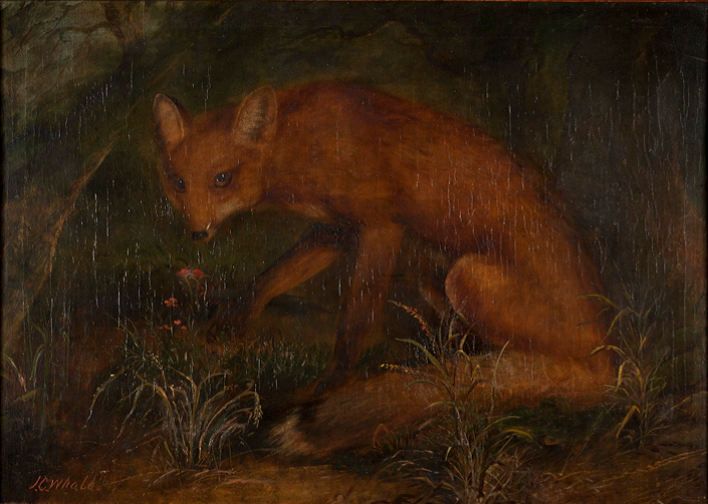Adopt an Artwork
Adopting an art work from the permanent collection at RiverBrink is a unique way to support the art museum. Although adopted art works remain at RiverBrink, your financial support enables you to establish a special connection with a beloved work of art.
You may choose from one of six annual giving levels, starting at $50. Your adoption helps support ongoing care and conservation of art works and helps ensure the future of the collection.
When you adopt an art work, your name will be showcased on a label whenever the work is exhibited, but you can also remain anonymous if you prefer. Adopting an art work is also a wonderful memorial tribute for an art lover and RiverBrink supporter. Tax receipts are provided for donations.
Adoption rates are for one year at a time and are based on the art work you choose to adopt.
Click the images below to learn more about the artwork available for adoption.
You may choose from one of six annual giving levels, starting at $50. Your adoption helps support ongoing care and conservation of art works and helps ensure the future of the collection.
When you adopt an art work, your name will be showcased on a label whenever the work is exhibited, but you can also remain anonymous if you prefer. Adopting an art work is also a wonderful memorial tribute for an art lover and RiverBrink supporter. Tax receipts are provided for donations.
Adoption rates are for one year at a time and are based on the art work you choose to adopt.
Click the images below to learn more about the artwork available for adoption.
|
Marie Laurencin
French 1885-1956 SELF-PORTRAIT, 1927 Lithograph This lithograph, by the French artist Marie Laurencin (1883-1956), was an early purchase by Sam Weir. He had admired the lithograph in an exhibition at the Art Gallery of Toronto, and acquired his own print in 1931. The artist was an important member of the Parisian avant-garde, known for portraits of women and a strong feminine aesthetic. This artwork has been generously adopted by Colin Brezicki. |
|
John Raphael Smith (after Joseph Wright of Derby)
English 1752-1812 WIDOW OF AN INDIAN CHIEF, March 2 1812 Mezzotint This mezzotint is based on an oil painting by Joseph Wright (1734-1797), an English artist known for romantic landscapes and portrait paintings. The original painting was first exhibited under the title Indian Widow at Wright’s solo exhibition in 1785. Sam Weir purchased the print in 1963. $180 annually |
|
Kenojuak Ashevak
Canadian 1927-2013 WONDERFUL BIRD, 1965 Engraving, ink print Renowned Canadian Inuit artist Kenojuak Ashevak was one of the first women from Cape Dorset to begin drawing and one of the founding members of the West Baffin Eskimo Cooperative. Born on Baffin Island, Ashevak was a skilled seamstress who first created vibrant designs and decoration for clothing and bags made of sealskin. Her outline forms were strong and compelling, and translated well to both drawing and printmaking. This engraving of a bird shows Ashevak’s signature style of flowing, curving lines and simple yet evocative design. $180 annually |
|
Frederick Marlett Bell-Smith
b. London 1846, d. 1923 Toronto NIAGARA FALLS IN WINTER, n.d. Oil on artist’s board This charming painting perfectly captures the atmosphere and light of a sunny winter day at Niagara Falls. In the 19th and early 20th century, visitors could venture close to the water, climbing on ice flows and even an ice bridge. Sam Weir purchased the painting in 1947, around the time he purchased the land for RiverBrink. This artwork has been generously adopted by Allan Magnacca. |
|
Unknown Artist
PORTRAIT OF JAMES HOLT, n.d. Oil on wood panel This is an exceptional rendering of a young man in formal attire. In the portrait, James Holt, positioned slightly off to the left, looks back at the viewer with a firm gaze. The figure is framed by flowing drapery on the left and a classical pillar on the right. $180 annually |
|
Frederick Simpson Coburn
Canadian (1871-1960) LOGGING, 1928 Oil on canvas Winter scenes by Frederick Simpson Coburn are well-known and widely admired. The artist’s scenes of bright, snow-laden winter landscapes, with horses or sleighs and logs lumbering through the wintry countryside of the Eastern Townships express a uniquely Canadian scene. Coburn shows the effect of light and shadows on the roads and snowbanks as well as the crisp, frigid atmosphere of winter. $180 annually |
|
Francis Cotes
English (1726-1770) PORTRAIT OF FRANCES DAVIS, 1760 Oil on canvas A British artist celebrated for his work in pastels and oils, Francis Cotes produced many portraits of fashionable ladies and gentlemen. The sitter is pensive, looks directly at the viewer, her face resting on her palm, leaning on the arm of a green-coloured chair or sofa. The background is dark, which frames the pink of her dress, and pale skin. The lace cuffs are carefully laid out, as if to emphasize the richness of the dress and the artist’s skill in capturing these details. $180 annually |
|
Unknown Artist
SEAL, n.d. Soapstone This dark gray soapstone carving of a seal in a familiar, stylized form is wonderfully tactile. Various etching marks suggest movement and depth and the details of eyes, flipper and tail. Seal is portrayed laying on its front and suggests the sleek movements of a seal in a natural habitat. $180 annually |
|
Unknown Artist
FISH, n.d. Soapstone This dark gray-green soapstone carving of a fish includes numerous etched marks to suggest details. Eyes, mouth, gills and fin are created with finely etched lines. The inclusion of the gills and fin allows viewers to understand the shape and suggest movement in water. $180 annually |
|
Unknown Artist
DUCK, n.d. Soapstone This light green soapstone carving of a duck has several unique etched marks, apparently carved and connected though dotted lines. The marks on the neck, wings, and tail outline the essential features of the bird. $180 annually |
|
Unknown Artist
SLEEPING BIRD, n.d. Soapstone This light, yellow-green soapstone bird sleeps with its head on its wing. The thick etching marks on its wings identify it is a flying creature, perhaps a swan or Canada Goose. The head/neck is fully carve and set apart from the body. $180 annually |
|
Lt. General Sir William Henry Barnard
b. England 1799, d. 1857 India NIAGARA FALLS, 1830s Watercolour over pencil on paper This watercolour captures the atmosphere of water, spray and fog at the brink of the Falls. Opposite the centrally placed Terrapin Tower, the precipice looms ominously in the foreground. This is one of twelve watercolours in the collection by Barnard, a British colonial officer stationed in Canada. Samuel Weir purchased the drawings from a Sotheby’s auction in London in 1965. This artwork has been generously adopted by Robert Sears. |
|
Augustus John
Welsh 1878-1961 CHIQUITA, c 1921 oil on canvas Augustus John (1878-1961) captures the independent spirit of Chiquita Birkbeck in this portrait of the well-known artists’ model. Born in Cuba, Birkbeck frequented the Café Royal in central London during the 1920s, when the café was a popular destination for a bohemian crowd of artists and writers. Sam Weir purchased the painting in 1955. This artwork has been generously adopted by Sandra Lawrence |
|
Marc-Aurèle de foy Suzor-Coté
Canadian 1869-1937 SON OF THE PIONEER, 1921 Oil on canvas The sitter for this portrait was the artist’s nephew, Jacques Gerrard Poisson. It dates to the early 1920s, when Suzor-Coté applied the techniques of impressionism to traditional subjects in French Canada. Sam Weir purchased the painting in 1933. $350 annually |
|
Zachary Vincent
b. Quebec 1915-1886 SELF-PORTRAIT, 1852-53 Oil on canvas In this self-portrait, the artist presents a conscious response to claims that the Huron would soon be extinct. Shown with his son, wearing traditional ceremonial objects from both the Huron-Wendat community and the British colonial power, the artist provides powerful evidence that his culture and lineage endure. Sam Weir purchased this painting in 1969. This artwork has been generously adopted by an anonymous patron. |
|
Albert Robinson
1881-1956 MIDNIGHT MASS, n.d. Oil on artist’s board Born in Hamilton, Ontario, Albert Robinson began painting Canadian landscapes in 1907, specializing in oil and often producing winter landscapes. In Midnight Mass, the church is set in a snowy landscape. The church spire is a dominant feature and focal point. The church is illuminated with lights coming from inside the church, inviting viewers in with warmth and comfort. This artwork has been generously adopted by David and Heather Fuller |
|
Sir Matthew Smith
1879-1959 APPROACHING STORM, CAGNES, 1932 Oil on canvas Matthew Smith was born in Halifax, Yorkshire and studied fine art in London. Smith’s work is noteworthy for his use of colour and strong contrasts, as seen in the painting Approaching Storm. He lays on the paint confidently and generously. In this landscape, a winding road cuts through the right side of the foreground, while storm clouds gather on the horizon. $350 annually |
|
Sir Jacob Epstein
b. N.Y. 1880: d. 1959 London MARIGOLDS, n.d. Gouache on board The American-British sculptor, Sir Jacob Epstein, was acknowledged as one of the leading portrait sculptors of the 20th century. In the 1930s, Epstein created a series of flower and nature studies which was unusual for him. In this painting, Marigolds, Epstein focuses on the vibrancy and bright colour of the flower. The thickly applied pigments and expressionist techniques suggests many connections to his sculptural practice. $350 annually |
|
Marc-Aurèle de Foy Suzor-Coté
Canadian 1869-1937 LA COMPAGNE DU VIEUX PIONNIER, 1914 Bronze A French-Canadian painter and sculptor, Suzor-Cote began to experiment with bronze in the early 1900s and went on to produce many iconic works of Canadian Habitant identity. La compagne du vieux Pionnier (the female companion of the old Pioneer) depicts an elderly woman, reclining in a chair, knitting. The details of clothing and boots combined with the lines of the floorboards animate the figure with realism and warmth. $350 annually |
|
Artist Unknown
BATTLE OF QUEENSTON HEIGHTS, c. 1830 oil on canvas One of the many iconic works in the collection, this painting is a composite view of the events of October 13th 1812, beginning with the launch of an amphibious assault by U.S. American forces across the Niagara River and ending with a victory for the British. The painting was acquired from an antiques dealer in London in 1967 and has been a popular attraction for visitors over many years. $700 annually |
|
William Pars
English (1742-1780) PORTRAIT OF THE YOUNG JOHN GRAVES SIMCOE, 1770-75 Oil on canvas The painting is believed to have been commissioned by Simcoe’s mother prior to his departure for service in the American Revolutionary War. In the painting, the soldier and future Lieutenant-Governor poses beside a monument dedicated to his father. Today Simcoe is acknowledged for his role in the eventual abolition of slavery in British North America. The 1793 Act to Limit Slavery in Upper Canada is considered Simcoe's most important achievement. $700 annually |
|
William Glackens
U.S. American, 1870-1938 WASHINGTON SQUARE, n.d. Oil on canvas Washington Square is a landmark in the Manhattan neighbourhood of Greenwich Village in New York City. A large memorial arch, of plaster and wood, was constructed in the area in 1899, to celebrate the centennial of President George Washington’s inauguration. The temporary arch was so popular that in 1892 a permanent marble arch, designed by architect Stanford White, was erected. The square and arch were favourite subjects for artist William Glackens, who completed more than twenty paintings of the Square between 1909 and 1914. The Philadelphia-born artist painted the view from his studio on the south edge of the park. $700 annually |
|
Gustave Loiseau
French 1865-1935 EFFET DE PLUIE, PONT AVEN, n.d. Oil on canvas A member of the Pont-Aven school of impressionism, Gustave Loiseau explored the landscape of Brittainy in northern France. One of several artists of the school in the RiverBrink collection, Loiseau was represented by renowned art dealer Paul Durand-Ruel at the turn of the century. Sam Weir purchased the painting in 1963. $700 annually |
|
René-Jean Richard
b. Switzerland 1895, d. 1982 Baie St. Paul HILLY LANDSCAPE WITH HOUSE AND ROAD, n.d. Oil on board René-Jean Richard was most recognized for his landscapes of the Quebec countryside and northern Canada. This painting shows a landscape scene cut through by a dirt road. Snow is visible on the hills, and a house can be seen in the right midground. For this landscape, he employed a mixture of warm and cool colours. Despite the fact that it is a winter scene, the prominent use of warm colours suggests the near end of winter, and the commencement of spring. $700 annually |
|
Jean Charles Cazin
French (1841-1901) SUR LA RIVE DU LAC, LE SOIR, before 1889 Oil on canvas Born at Samer, Pas-de-Calais, Cazin studied painting in France and then travelled to England, where he was strongly influenced by the pre-Raphaelite movement. Many of his important earlier pictures have a religious theme, from stories and figures from the old and new testament. His work gradually became less realist/idealist, as he moved to explore different treatments of landscape, working in a mode known as tonalism. Our painting is undated, but would appear to belong in this period. In the painting, the buildings are shrouded in fog and mist, with tiny points of light. The shore is indistinct, but we can just make out piers along the shoreline. $700 annually |
|
James Wilson Morrice
b. Montreal 1865, d 1924 Tunis LE PORCHE DE L’EGLISE SAN MARCO (VENISE), 1896-1904 Oil on wood panel Born in Montreal of a wealthy merchant family, James Wilson Morrice studied at the University of Toronto and Osgoode Hall but did not practice law. Instead, he went to Europe to become a painter. Acquired in 1937 from Galerie Allard in Paris, Le Porche de l’eglise San Marco is a pochades, a painting on a small wooden panel that could be carried in a pocket. $1000 annually |
|
Homer Watson
Canadian 1855-1936 THE LOTHIAN HILLS, 1892 Oil on canvas One of Sam Weir’s favourites, this painting was purchased in 1920 directly from the artist. it was painted in Canada from a sketch created in Scotland during Watson’s stay in England and Scotland from 1887-1891. The scene is a landscape near Edinburgh, from the window of a train. $1000 annually |
|
Cornelius Krieghoff
b. Amsterdam 1814, d. 1872 Chicago SETTLER’S CABIN IN THE WOODS, 1859 Oil on canvas In this painting, the artist has created a romanticized view of homesteading in a harsh climate. The year and theme suggest it dates to the era of colonisation in Québec, when the government of Canada East opened crown lands for settlement in Saguenay, along the St. Maurice River, above Trois Rivières, near Ottawa, and in the eastern townships. Sam Weir acquired the painting in 1958. $1000 annually ($85 monthly) |
|
Emily Carr
Canadian 1871-1945 INDIAN BARN, FRIENDLY COVE, 1929 watercolour on paper Following the 1927 exhibition of her work at the National Gallery, Montreal Museum of Fine Art, and the Art Gallery of Toronto, Emily Carr returned to her home in British Columbia with renewed spirits. The support she had received from fellow artists in Eastern Canada, such as Lawren Harris, encouraged her to continue in new directions. At this time, she began to work on a larger scale and brought a subjective interpretation to explorations of the landscape and Native Peoples of British Columbia, both evident in this large-scale watercolour purchased by Sam Weir in 1953. This artwork has been generously adopted by Lorraine Joyner. |
|
Tom Thomson
Canadian 1877-1917 SKETCH FOR THE JACK PINE, c 1916 Oil on board This small sketch was the basis for The Jack Pine (1917), one of Thomson’s most iconic works. In the five years before his death in 1917 the artist produced some 300 sketches en plein air. These are often considered among his most accomplished work, for their vibrant colour and vigorous brushwork. Sam Weir purchased the sketch in 1947 from the T. Eaton Gallery, Toronto. This artwork has been generously adopted by Geoffrey Joyner. |
|
Lawren Harris
Canadian 1885-1970 STUDY FOR ‘IN THE WARD 1, CITY PAINTINGS’, 1918 Oil on artist board This small sketch is one of a number of paintings by Harris depicting the area of downtown Toronto known as the Ward. Bordered by College and Queen, University and Yonge Streets, Ward 1 (St. John’s Ward) was a notoriously impoverished community and home to many recent immigrants. Rather than focusing on the poverty and squalor of the inner city enclave, however, Harris was instead drawn to the effect of harsh sunlight on flat surfaces, on the aesthetics of shape and colour and shadow. $1200 annually ($100 monthly) |
|
Tom Thomson
Canadian 1877-1917 NORTHERN WOODS, early 20th c Oil on wood panel Purchased by Weir in 1947, this painting is typical of the small sketches Thomson completed out of doors and worked up later in his studio. The location is unknown, but similar to scenes of the north such as Algonquin Park, which Thomson frequented. $1200 annually ($100 monthly) |
|
Nicholas Hornyansky
B. Budapest 1896 d. 1965 Toronto HOME OF THE COLONIAL ADVOCATE, c 1937 Etching and aquatint Prints and drawings by Hornyanksy constitute the largest body of work by a single artist in the collection. Hornyansky’s association with RiverBrink began when Sam Weir contacted the artist in 1947 with a request for a print of his alma mater, Osgoode Hall. A wide range of aquatint prints and watercolours are available for adoption, including others from the Niagara Suite, a series of prints of local Niagara historical sites by Hornyansky. $50 annually (click adopt now for this and other works by Hornyansky available for adoption) Nicholas Hornyansky, Home of the Colonial Advocate, c 1937 has been generously adopted by Nancy Bongard. |
|
John Claude Whale
Canadian (1853-1905) THE FOX, c. 1870-1900 Oil on Canvas Gift of Mrs. P. Malkiewich The son of the English-born painter Robert Reginald Whale, John Claude Whale was a member of the Whale family painting dynasty in Burford, Ontario. Founded by his father following his immigration to Canada in 1852, the family studio employed John Claude, his brother Robert Heard Whale, and cousin John Hicks Whale. Without a steady art market in Canada at the time, the family of artists relied on the prize money from annual provincial fairs and private commissions. Whale’s portraits, landscapes, and animal studies document the cultural heritage of the Brant County area following Confederation. This artwork has been generously adopted by Patty Malkiewich. |

